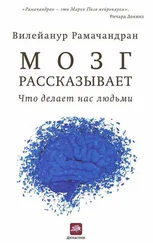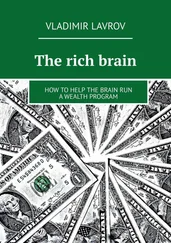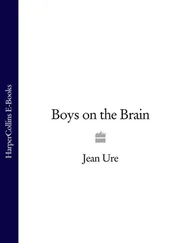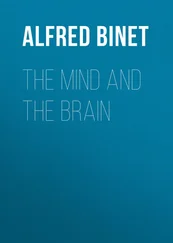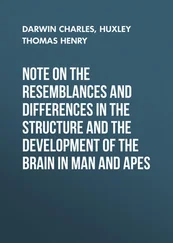phantom, 35–36, 57, 270n
sexuality and, 3, 35–37
Feinberg, T., 278n
Fermat, Pierre de, 188
Feynman, Richard, 120
filling-in phenomenon, 88–96, 90 , 273n–274n
blind spots and, ix, 89–96, 90 , 104, 236–237, 236 , 242–243, 273n, 297n
in Charles Bonnet syndrome, 110
defined, 88, 273n
perceptual vs. conceptual, 103–104, 110
scotomas and, 89, 98–104, 272n–273n
finger agnosia, 19
fingers:
brain mapping and, 26, 26 , 50
disease identification and, 6–7
phantom, vii, 1, 21–22, 28–30, 30 , 41, 43, 47, 49–55, 111, 270n
Finkelstein, Rita, 28
fists, phantom, 52–55, 111
Fletcher, Diane, 63–65, 69, 79–83
flower drawing, 121–122, 122
follicle-stimulating hormone (FSH), 217, 294n
foot fetishes, 26, 36–37
Foster, Chris, 295n, 297n
foveal vision, 80
Fregoli syndrome, 171
Freud, Anna, 130, 153
Freud, Sigmund, viii-ix, 3, 36, 41, 135, 147, 152–157, 205, 224
Capgras’ syndrome as viewed by, 161–162
defense mechanisms and, 130–133, 139, 152–156
Fried, I., 291n
Frith, Chris, 141–142, 280n
frontal lobes, 9, 9 , 17 , 116, 166, 175, 177, 228, 234, 247, 264n–265n, 282n, 284n
consciousness and, 244, 248
movement and, 44
ventromedial, 142–143
frontal lobe syndrome, 182
Frost, P., 289n
functionalists, 264n
functional magnetic resonance imaging (fMRI), 141, 263n, 266n, 270n
funhouse, images in, 109, 274n
Fuster, J.M., 269n
Gage, Phineas, 248
Gainotti, G., 280n
Galileo, xi, xiv, 24, 266n
Galin, D., 278n, 279n, 296n
Gall, Franz, 264n–265n
Gallen, Chris, 31
galvanic skin response (GSR), 61, 166, 248, 250, 270n, 279n, 282n
Capgras’ syndrome and, 164–165
of Cotard’s syndrome patients, 167
temporal lobe epilepsy and, 185–187, 286n
Gamow, George, ix, xii
Gandhi, Mohandas K., 174
Gardner, H., 281n
Gastaut, H., 285n
gate control (volume control), 51
gay bashers, 153
gaze direction, 168–169
gaze tinnitus, 37–38
Gazzaniga, M., 280n
genetic engineering, 197
genitals:
brain mapping and, 25, 26 , 27, 35–36, 266n
see also erections; penis genius, 185, 192–198
George (denial patient), 283n
Geschwind, Norman, 265n, 285n
gestalt, 109
Gestalt psychologists, 82
gesticulation, 41, 42, 44, 140
Gibbs, F.A., 285n
giraffes, long neck of, 293n
glaucoma, 87
God, 3, 39, 175–176, 179–182, 184–188, 191, 235, 273n
Goldberg, E., 269n
Goldberg, G., 269n
Goldman-Rakic, P.S., 269n
Goldstein, Kurt, 12–13, 129
Gombrich, Ernest, 288n
Goodale, Mel, 77
Gould, Stephen Jay, ix, xii, 209, 265n, 292n
Grace (denial patient), 142
Gray, C.M., 296n
Graziano, M.S.A., 280n
“Greenough, Ruth”, 200, 201, 207, 208, 288n
Gregory, Richard, ix, xii, 65, 120, 190, 271n, 273n
Griffiths, Fred, 263n
Gross, C.G., 77, 280n, 284n
Haldane, J.B.S., xxi, 39, 113
Halligan, Peter, 105, 117–118, 250, 276n
hallucinations, 33, 105–112, 275n
auditory, 105, 106
Charles Bonnet, 87–88, 105–112, 274n–275n
imagining and, 110–112
temporal lobe epilepsy and, 176–177
of Thurber, 85–87, 86
Hamilton, John, 298n
Hamilton, W.D., 288n, 289n
Hamlet (Shakespeare), 139
hands, 209
brain mapping and, 26, 26 , 27–31, 30 , 32
dummy, 59–60
Parkinson’s disease and, 269n–270n
telescoped phantom, 42–43
see also fingers
Hard Times (Dickens), viiiHardy, G.H., 194
Hari, Riita, 247, 282n
Head, Henry, 44
Hebbian link, 54
Heilman, J., 276n
Helicobacter pylori , xvHelmholtz, Hermann von, 68
hemianopia, 75
hemineglect, see neglect syndrome
hemispheric specialization, xiii, 142
anosognosia and, 134–136, 279n–280n
see also left hemisphere; right hemisphere
heredity, see DNA; nature vs. nurture
Hermelin, B., 286n
Hildebrandt, K.A., 289n
Hill, A.L., 286n
hippocampus, 15, 16 , 17, 148, 163 , 178 , 265n
Hippocrates, 294n
Hirstein, W., 247, 270n, 284n, 286n, 296n
H.M. (amnesia patient), xiii, 15, 148, 149, 265n
Hobson, J.A., 283n
Hochberg, J.E., 271n
holism, 10–11, 80
Holmes, Sherlock, 1, 3, 12, 158, 212
homosexuality, latent, 153
Hooker, Joseph, 189
hormones, 177, 196, 197
false pregnancy and, 216, 217, 218, 294n
“how” pathway, 74 , 77, 78, 79, 81, 82, 82 , 83, 110, 111, 115, 283n
consciousness and, 240–241, 244, 247
mirror agnosia and, 277n
How the Mind Works (Pinker), 288n
Hubei, David, 271n, 272n
Hume, David, 171, 296n
humor, 154, 188
evolution of, 203–209, 286n, 291n
false alarm theory of, 206, 207
see also jokes; laughter
Humphrey, Nick, 275n, 296n
Huxley, Thomas Henry, ix, xi, 152
hyperconnectivity, 248
hypertrophy theory, 287n
hypnosis, 215, 218–219, 294n–295n
hypothalamus, 10, 16 , 155, 156, 163 , 164, 177–178, 182, 201, 228
false pregnancy and, 216, 217
hypoxia, 15
“ice water in the ear” stimulation, 144–148
ideomotor apraxia, 269n
imaging techniques, 35, 83, 284n
functional magnetic resonance (fMRI), 141, 263n–266n, 270n
magnetic resonance (MR), 32, 287n
magnetoencephalography (MEG), 31, 32 , 263n, 270n
positron emission tomography (PET), 141, 142, 263n, 285n
imagining, imagination, xv-xvi, 87–88
hallucination and, 110–112
seeing vs., 88, 109–110
immune system, 214, 219–221, 225
imposters, Capgras’ syndrome and, ix, 158–166
India, 183, 193–195, 214, 265n
leprosy in, 57–58
information sequencing, 277n
Ingrid (Swiss patient), 72, 81
injections, mock, 151–152, 283n
insular cortex, 156, 208, 228
intelligence, 190–193, 292n
general, 192, 193, 195
kinetic, 190
phrenology and, 264n–265n
potential, 190–191
intralaminar thalmic nuclei, 252, 253
Iragui, Vincent, 185–186, 286n
Irene (phantom limb patient), 43, 44, 46
Ironside, R., 288n
itching, 28, 38
jacksonian seizures, 179
Jacobs, B., 292n
James, William, 267n, 276n
Jean (denial patient), 150, 153–154
Joan (scotoma patient), 274n
Joe (amnesia patient), 169–170
Johanson, D., 286n
Johnson, Mark, 28
Johnston, M.A., 294n
jokes, 3, 18–19, 147, 154, 203–204, 206, 207, 291n
Josh (scotoma patient), 97–103, 274n
Kaas, John, 272n
Kallio, K.E., 270n
Kandel, Eric, 265n
Kant, Immanuel, 115, 203
Karen (phantom limb patient), 55
Kauffman, Stuart, 292n–293n
kindling hypothesis, 182–183, 185–186
kinetic intelligence, 190
Kinsbourne, M., 279n, 280n
Kleffner, D.A., 271n
Klüver, Heinrich, 78
Klüver-Bucy syndrome, 78–79, 248
Knight, Mary, 212–217
Koch, Christof, 234
Korsakov, Sergei, 265n
Kristensen, O., 285n
Kuhn, Thomas, 136, 204, 222
Kumar, Mirabelle, 40–44, 57
Lackner, J.R., 270n
La Croix, R., 270n
Lamarckian evolution, 190
Lancet , 105
language, 10, 11, 14, 19, 117, 191, 245, 295n
body, 41, 42, 44
hemispheric specialization and, 133, 283n
Читать дальше


